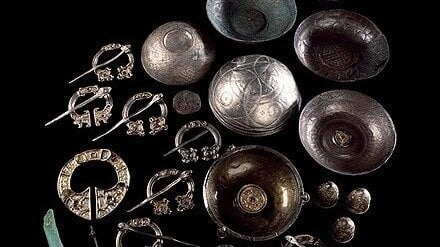Bakery celebrates its 100th year in business
Voe Bakery is celebrating its 100th anniversary this year and there will be a weekend of festivities to mark the event at the end of May.
The bakery at Lower Voe was started in 1915 to serve the Royal Navy’s 10th cruiser squadron which bunkered at Busta Voe, as well as the number 2 cruiser squadron which bunkered at the old whaling station at Olna. Collectively the whole base was called Swarbacks Minn by the Royal Navy – Swarbacks Minn being the site of an anti-submarine net.
The area would have been bursting with activity, with eight or 14 cruisers in the squadrons, plus many other types of ships such as lighters, tugs, messenger ships, drifters, minesweepers and a hospital ship, as well as coal hulks. Coal was shipped from the Tyne and taken onto the Shetland-based ships at Busta Voe, while Olnafirth was particularly important for taking on water.
The mission of the two squadrons was to implement a blockade to prevent merchant ships from neutral countries getting supplies to Germany, and the Shetland-based ships patrolled up to Faroe, Norway and even as far as Iceland. The British ships would intercept those heading to Germany, sometimes escorting them to Lerwick where the cargo could be confiscated.
The Voe Bakery was central to these operations, supplying bread – always white unsliced – and probably ships biscuits to all those involved. And, in the days of very little automation on ships, this would have meant hundreds of men.
Bakery office manager Tracey Thompson said she was proud to be part of the celebrations, and said: “There can’t be many places in the UK still doing the same thing as 100 years ago.” Their range has increased substantially since then, however.
In those days Lower Voe – the original part of Voe – was a thriving centre, which had fishing smacks, a salt store underneath the sail loft, a shop, knitting and weaving sheds, and a workshop for making barrels for fish. The bakery is the only part of the area still used for its original purpose.
But, said Mrs Thompson, the building dates back before 1915, but was converted to service the forces and those associated with them. The area even had a slaughterhouse, again for supplying the war effort.
And the whole enterprise was owned by the firm of T M Adie and Sons, whose descendants are supporting the 100th anniversary celebrations.
Shetland Museum curator Ian Tait said: “This was a tremendously busy part of Shetland and the
bakery did astonishingly well. There was also a guaranteed market for beef so the Adies built a slaughterhouse.”
He added that a knock-on effect of the war was that folk got used to a cash economy and it became “aspirational” to have shop-bought bread rather than baking it at home.
Voe resident John Taylor, who was 23 years in the military, is very involved in planning next month’s celebrations. He said there will be stalls, music, a bran tub, face painting a hog roast and a barbecue on the pier on Saturday 23rd May, and local primary schools have been invited to make up their school names in bunting.
The following day, some of the atmosphere of 1915 will be recreated when the Royal Navy ship HMS Middleton sails into Olnafirth.
It is hoped the crew of the vessel will form a yoal team to row against local teams in the voe.
The visit will culminate with the laying of wreaths on eight navy graves in the kirkyard of the old Voe Kirk. At 7pm, to mark sunset, the band of the Royal Marines will play for the lowering of the white ensign.
Mr Taylor said any profits from the event will be divided between local youth clubs and playgroups, and a souvenir booklet is expected to be produced.
Dr Tait said he was delighted the naval contribution Shetland made to the First World War was being marked as 70 per cent of Shetlanders on active war service were in marine roles. He said much of their war effort has been forgotten as there are virtually no reminders on land, and subsumed into the “national narrative” of trenches, barbed wire and poison gas.








NO COMMENTS
Add Your Comment